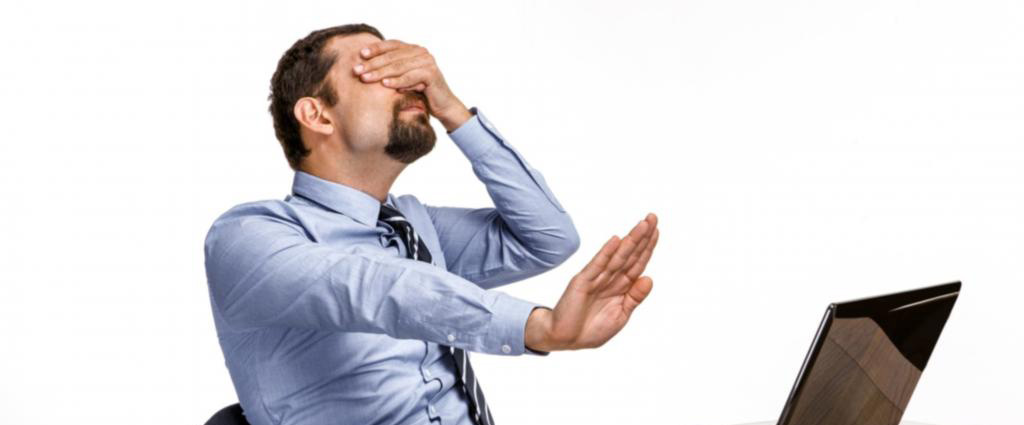The copyright notion can be very puzzling at times and it is no wonder that numerous misconceptions and misunderstandings appear, putting on a false track creative professionals, who only start dealing with the copyright issues and want to secure their work. Stop being bombarded with these legends. Let’s sort out and dispel the most common copyright myths.

Myth #1: Works presented on the Internet are in the “Public Domain”.
This is probably the biggest misconception. It is crucial to know and correctly understand the essence of the “public domain” concept when referring to copyright.
A copyright is assigned for the author’s lifetime plus several additional years. Only after the copyright expiration a work goes to the public domain and can be used by others without restrictions. It is true that texts and images published on the Internet are publicly accessible, but they are not in the public domain and only the author can decide how he would like people to use his content. Typically, such guidelines can be found on a website’s Terms of Use page. To get out of the rain, check these instructions and the record of creations that are not protected by the intellectual property law:
– Ideas, names, slogans and other uncopyrightable items. More detailed information you can also find in one of our previous posts “What can’t be protected by copyright?”.
– Works with the expired or not renewed copyright.
– Documents of the Federal Government.
– State Government documents and some publications.
Myth #2: I can freely copy less than 10% and it is “fair use”.
Wrong again. Any unauthorized adoption of the copyrighted material leads to certain legal actions and you would have to prove the fair use after being sued. You have to get the green light to put to use even a tiny part of the creative output.
As for fair use, you won’t violate the copyright rules and regulations if you apply short quotes or statements for teaching, research, scholarship, criticism or reporting purposes. In all other cases, seek author’s agreement to avoid legal trouble.
Myth #3: I can copyright an idea, name or a title.
You cannot copyright intangible items. Any work must be recorded or fixed in some form to get the protection. There is very little you can do to stop others from creating something based on your idea, unless it has turned into an invention and you have patented it.
One must admit that short phrases and titles may be duplicated and used coincidentally. As long as the content itself is not copied or adopted there is no infringement. It does not mean, however, that you cannot protect names and phrases used for your business identification on the market. Just register a trademark for that.
To avoid the confusion, check out “What can’t be protected by copyright?“.
Myth #4: No registration and copyright notice, no protection.
Actually, the use of the copyright notice is optional for works created after April 1, 1989. Once the creative output is fixed in some way, it automatically gets covered by copyright. It is at your choice to have a final word about the usage of the internationally recognized © symbol to identify your work and remind others about your legal rights.
The same goes for registration. It is not obligatory but, nevertheless, it provides extra benefits when dealing with infringers in court, like getting statutory damages and attorney fee refunding.

Myth #5: I have made some changes and do not need author’s permission.
Totally false. It is great to gain inspiration from various source, novels, paintings, and photos, but when it comes to producing your own work, avoid plagiarism and start with the blank sheet.
Remember, you must have a permission to use scenes, images or characters from previously published works. Even if you make some changes, it does not take away the need to get author’s approval. It will be the derivative work and all rights will exclusively belong to the copyright holder, unless you prove the fair use.
The derivative works field is extremely tricky and without corresponding permission a copyright owner has all legal rights to stop you from publishing the work you have created and can even reclaim any money you received from selling it. Therefore, any copy should be approved by the author.
Myth #6: Anything mailed or emailed to me is mine.
The so-called “poor man’s copyright” method, when you send yourself a copy to prove the copyright, may do the job in some cases, but it does not provide the sufficient protection, since it can be faked with no effort and there are no tried and true verification methods able to confirm the content originality. If you are planning to sue and want to get full legal protection, you still need to register your work.
One more aspect it the postal and email communications. Though you own the letter printout and can quote or report some statements, to publish the full content you need to seek the other party consent.

Myth #7: I do not cash in on it, credit the author and can use content without permission.
Unless such usage falls under the fair use terms, it is a theft to reproduce someone else’s work without permission even for non-commercial objectives. Plus, it is not enough to give a credit. If you do not want to face legal actions and damages claim, it is better to get author’s “blessing” prior to adopting his work.
Knowing these common copyright myths and “Quick Tips About Copyright” may help you out of the legal trouble and assist in protecting your own work. Know other myths? Share them in comments.

